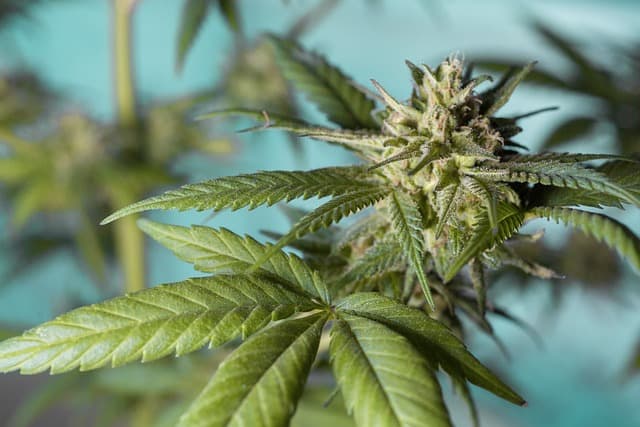Brown spots on weed leaves are a common problem for many cannabis growers. These spots can appear for a variety of reasons, including nutrient deficiencies, pests, and environmental factors. Identifying the cause of brown spots is essential for treating the issue and preventing further damage to the plant.
In this article, we will explore the causes of brown spots on weed leaves and how to prevent and treat them. We will discuss the role of soil and pH levels, the importance of proper care in cannabis cultivation, and the understanding of the growth stages of cannabis.
We will also provide answers to frequently asked questions about brown spots on weed leaves. By the end of this article, readers will have a comprehensive understanding of how to identify, prevent, and treat brown spots on their cannabis plants.
Key Takeaways
- Brown spots on weed leaves can be caused by nutrient deficiencies, pests, and environmental factors.
- Proper care and understanding of the growth stages of cannabis can help prevent and treat brown spots.
- Maintaining proper soil and pH levels is crucial for the health of cannabis plants.
Similar posts:
- Brown Spots Under Monstera Leaves
- Brown Spots Under Fiddle Leaf Fig Leaves
- Brown Spots on Yucca Leaves
Identifying Brown Spots on Weed Leaves
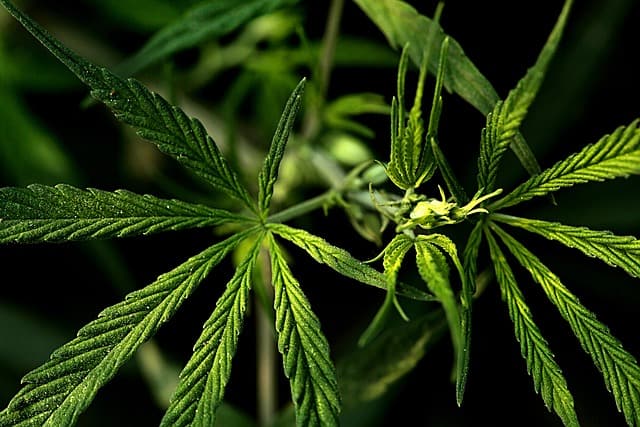
Brown spots on weed leaves can be caused by various factors, including low pH levels, calcium deficiency, light burn, problems with heat and poor air circulation, watering conditions, bugs or pests, and more. Identifying the cause of brown spots is essential to prevent further damage to your plants.
To identify brown spots on weed leaves, growers should look for the following symptoms:
- Brown spots on leaves that appear dry, crispy, or papery
- Brown spots that may be surrounded by yellow or brown halos
- Brown spots that may start from the tips or edges of the leaves and spread inward
- Brown spots that may be accompanied by other symptoms, such as wilting, curling, or yellowing of the leaves
Growers can use a magnifying glass to inspect the affected leaves and look for any signs of pests, such as spider mites, thrips, or whiteflies. They can also check the soil pH levels using a pH meter or test kit to ensure that the pH is within the optimal range for cannabis growth.
If the brown spots are caused by low pH levels, growers should adjust the pH of the soil or hydroponic solution by adding pH-up or pH-down solutions. If the brown spots are caused by calcium deficiency, growers should add a calcium supplement to the nutrient solution or soil.
In some cases, brown spots on weed leaves may be caused by environmental factors, such as high temperatures, low humidity, or poor air circulation. Growers should ensure that their grow room has proper ventilation and temperature and humidity control to prevent heat stress or other environmental issues.
Brown Spots on Weed Leaves – 5 Common Problems
Brown spots on weed leaves can be a sign of various underlying issues. It can be caused by light and heat stress, water and overwatering, nutrient deficiencies, pest infestation, and fungal diseases. Identifying the root cause of brown spots is crucial to treat the problem effectively.
1. Light and Heat Stress
Too much light or heat can cause brown spots on weed leaves. When the temperature is too high, the leaves may start to curl and develop brown spots. On the other hand, when the light is too intense, it can cause leaf burn and brown spots.
2. Water and Overwatering

Overwatering can lead to brown spots on the leaves. When the soil is too wet, it can cause root rot, which can affect the plant’s ability to absorb nutrients. This can lead to brown spots on the leaves.
3. Nutrient Deficiencies
Nutrient deficiencies, such as calcium and magnesium, can cause brown spots on weed leaves. Calcium is essential for nutrient absorption and healthy growth in all stages of cannabis.
A deficiency in calcium can present as brown spots on the leaves, slower flowering, foliage wilting, curled leaf tips, hollow and soft stems, and short and dry roots.
4. Pest Infestation
Pests, such as spider mites and fungus gnats, can cause brown spots on weed leaves. Spider mites feed on plant sap, which can cause brown spots on the leaves. Fungus gnats, on the other hand, can cause root rot, which can lead to brown spots on the leaves.
5. Fungal Diseases
Fungal infections, such as powdery mildew and bud rot, can cause brown spots on weed leaves. Powdery mildew can cause white or gray powdery spots on the leaves, which can turn brown over time. Bud rot, on the other hand, can cause brown spots on the buds, which can spread to the leaves.
Effects of Brown Spots on Plant Growth
Brown spots on weed leaves can have a significant impact on plant growth and development. In this section, we will explore the effects of brown spots on plant growth, including the impact on yield, cannabis leaves, and buds.
1. Impact on Yield
Brown spots on weed leaves can have a negative impact on yield. When plants are stressed due to nutrient deficiencies, pests, or other factors, they may not produce as much bud as healthy plants.
Brown spots can also be a sign of bud rot, which can cause buds to become moldy and unusable. This can significantly reduce the yield of a crop.
2. Impact on Cannabis Leaves
Brown spots on cannabis leaves can be a sign of nutrient deficiencies, pests, or other issues. When leaves are damaged or diseased, they may not be able to perform their functions properly, which can lead to stunted growth and poor yields.
In some cases, brown spots can also be a sign of a more serious problem, such as a viral or fungal infection.
3. Impact on Buds
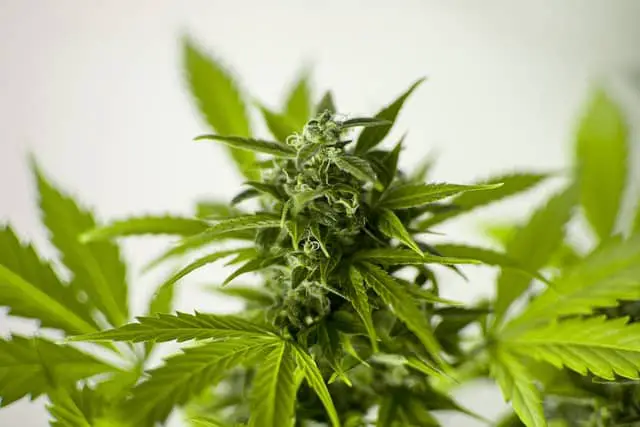
Brown spots on buds can be a sign of bud rot, which can cause buds to become moldy and unusable. This can be a significant problem for growers, as it can reduce the overall yield of a crop.
In addition, brown spots on buds can also be a sign of nutrient deficiencies or other problems, which can affect the quality and potency of the final product.
Prevention and Solutions for Brown Spots
Brown spots on weed leaves can be prevented and resolved by following proper growing techniques. Here are some solutions to help prevent and treat brown spots on cannabis leaves.
1. Proper Lighting and Ventilation
Light and ventilation are crucial factors in preventing brown spots on weed leaves. Too much light can cause light burn, while insufficient ventilation can cause heat stress. Both can lead to brown spots on cannabis leaves.
Growers should ensure that their plants are receiving the right amount of light and ventilation. They can also use reflective material to distribute light evenly across the plants. Ventilation fans can be used to provide adequate air circulation and prevent heat stress.
2. Watering Techniques
Overwatering or underwatering can cause nutrient burn or nutrient lockout, which can lead to brown spots on cannabis leaves. Growers should water their plants according to their specific needs. They can test the soil moisture levels by sticking their finger into the soil, and only water the plants when the soil is dry.
3. Nutrient Management
Nutrient deficiencies or excesses can cause brown spots on weed leaves. Growers should ensure that their plants are receiving the right amount of nutrients. They can use a nutrient solution that is specifically formulated for cannabis plants, and follow the manufacturer’s instructions for application.
4. Pest Control
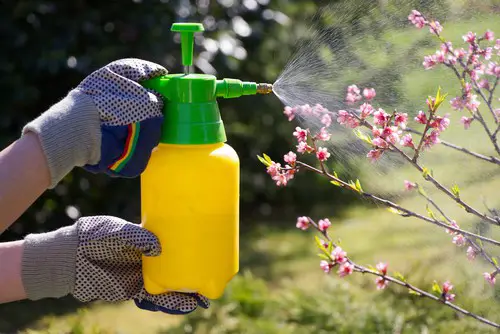
Pest infestation can cause brown spots on cannabis leaves. Growers should regularly inspect their plants for pests, and take appropriate measures to control them. They can use natural or chemical pest control methods, depending on the severity of the infestation.
5. Fungal Disease Management
Fungal infection can cause brown spots on weed leaves. Growers should prevent fungal diseases by maintaining a clean and dry growing environment. They can also use fungicides to treat or prevent fungal infections.
Role of Soil and pH Levels
Understanding Soil Composition
The soil is a critical component in the growth and development of cannabis plants. It provides the necessary nutrients and minerals for the plant to grow and thrive. Understanding the composition of the soil is essential in ensuring that the plant receives the required nutrients.
Soil is made up of three primary components: sand, silt, and clay. The ratio of these components determines the soil type. Sandy soil drains water quickly and does not retain nutrients well.
Clay soil retains water and nutrients but drains poorly. Silt soil is a mixture of both sandy and clay soil and has good drainage and nutrient retention properties.
Importance of pH Levels
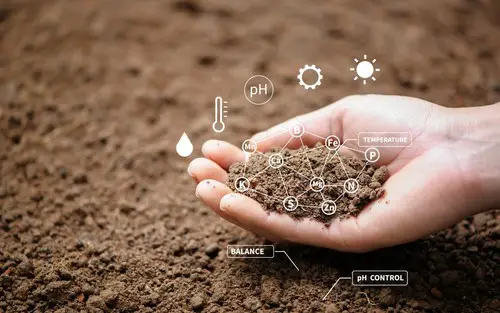
The pH level of the soil is a crucial factor in the growth and development of cannabis plants. The pH scale ranges from 0 to 14, with 7 being neutral. A pH level below 7 is acidic, while a pH level above 7 is alkaline. Cannabis plants thrive in a slightly acidic soil with a pH level of 6.0 to 7.0.
Low pH levels in the soil can cause brown spots on weed leaves. When the pH level is too low, the plant cannot absorb the necessary nutrients, leading to nutrient deficiencies. This deficiency can cause brown spots on the leaves and affect the overall health of the plant.
It is essential to monitor the pH levels regularly to ensure that they are within the optimal range. Soil pH test kits are readily available and easy to use. If the pH level of the soil is too low, adding limestone or dolomite can help raise the pH level.
Understanding the Growth Stages of Cannabis
When growing cannabis, it is important to understand the different stages of growth to ensure optimal plant health and yield. The three main stages of growth are germination, vegetative, and flowering. In this section, we will focus on the vegetative and flowering stages.
Vegetative Stage
The vegetative stage is the period of growth where the plant focuses on growing stems, leaves, and roots. During this stage, the plant requires high levels of nitrogen to support its rapid growth. It is important to provide the plant with the correct nutrients and lighting to ensure it grows healthy and strong.
Some key characteristics of the vegetative stage include:
- The plant will grow taller and wider.
- Leaves will become larger and darker green.
- The roots will grow deeper and wider.
Flowering Stage
The flowering stage is when the plant begins to produce buds. During this stage, the plant requires less nitrogen and more phosphorus and potassium to support bud development. The length of the flowering stage can vary depending on the strain of cannabis being grown.
Some key characteristics of the flowering stage include:
- Buds will begin to form and grow larger.
- Pistils (hairs) will begin to change color.
- Leaves may begin to yellow and fall off as the plant focuses its energy on bud development.
It is important to monitor the plant closely during the flowering stage to ensure it is receiving the correct nutrients and lighting. This will help ensure a healthy harvest.
Importance of Proper Care in Cannabis Cultivation

Cannabis cultivation requires proper care and attention to ensure a healthy and productive crop. This is especially true when it comes to the leaves of the cannabis plant.
Brown spots on weed leaves can be a sign of a variety of issues, including nutrient deficiencies, pests, and environmental stress. By providing the right care, growers can prevent brown spots and other leaf issues from occurring, which can help to maximize yields and ensure a high-quality product.
One of the most important aspects of proper cannabis cultivation is ensuring that the plants receive the right nutrients. Cannabis plants require a variety of macronutrients, including nitrogen, phosphorus, and potassium, as well as micronutrients like magnesium, calcium, and iron.
If these nutrients are not present in the right amounts, it can lead to brown spots and other leaf issues. Growers should also be careful not to over-fertilize their plants, as this can cause nutrient burn and other problems.
In addition to providing the right nutrients, growers must also pay attention to the environmental conditions in which their plants are growing. Cannabis plants require a specific range of temperature, humidity, and light in order to thrive.
If these conditions are not met, it can lead to stress on the plants, which can cause brown spots and other leaf issues. Growers should also be careful not to overwater their plants, as this can lead to root rot and other problems.
Finally, it is important for growers to be vigilant for signs of pests and diseases. Pests like spider mites, thrips, and whiteflies can cause significant damage to cannabis plants, including brown spots on the leaves.
Growers should also be aware of common cannabis diseases like powdery mildew and bud rot, which can also cause leaf issues. By monitoring their plants regularly and taking action at the first sign of a problem, growers can prevent brown spots and other leaf issues from becoming a major issue.
Frequently Asked Questions
How do I identify and treat leaf septoria on my weed plants?
Leaf septoria is a fungal disease that causes brown spots with yellow halos on weed leaves. It usually starts on the lower leaves and progresses upwards.
To treat leaf septoria, remove the infected leaves and ensure good air circulation around the plants. Avoid watering the leaves and instead water the soil directly. Use a fungicide spray to prevent further spread of the disease.
What causes brown spots on weed leaves and how can I prevent them?
Brown spots on weed leaves can be caused by nutrient deficiencies, low pH levels, light burn, pests, or plant stress from unfavorable conditions.
To prevent brown spots, ensure your plants are getting the right nutrients, maintain a proper pH level, provide adequate lighting, avoid overwatering or underwatering, and keep pests at bay.
What is the difference between leaf septoria and calcium deficiency in weed plants?
Leaf septoria is caused by a fungal infection, while calcium deficiency is a nutrient deficiency. Leaf septoria causes brown spots with yellow halos, while calcium deficiency causes brown spots without halos.
To prevent calcium deficiency, ensure your plants are getting enough calcium through proper feeding and watering.
How can I fix calcium deficiency in my weed plants to prevent brown spots on leaves?
To fix calcium deficiency, add calcium-rich fertilizers to your soil or water, such as calcium nitrate or bone meal. Ensure your soil pH is between 6.0 and 7.0 to promote nutrient absorption. If your plants are in hydroponics, add a calcium-magnesium supplement to your nutrient solution.
What are the best ways to prevent and treat rust spots on weed leaves?
Rust spots on weed leaves are caused by a fungal infection. To prevent rust spots, ensure your plants have good air circulation and avoid watering the leaves. To treat rust spots, remove the infected leaves and use a fungicide spray to prevent further spread of the disease.
Why do my weed leaves have yellow spots and how can I fix it?
Yellow spots on weed leaves can be caused by a variety of factors, including nutrient deficiencies, pests, or environmental stress. To fix yellow spots, identify the underlying cause and take appropriate action.
Ensure your plants are getting the right nutrients, maintain proper lighting and watering conditions, and keep pests at bay.

Hey, I’m Lisa and I’ve been an avid gardener for over 30 years. I love writing, talking and living in the garden! Feel free to connect with me on my socials below

